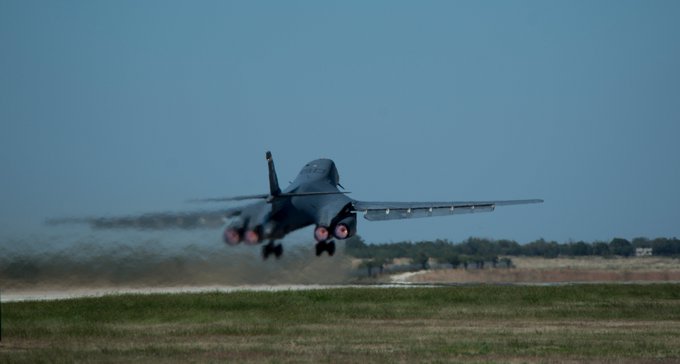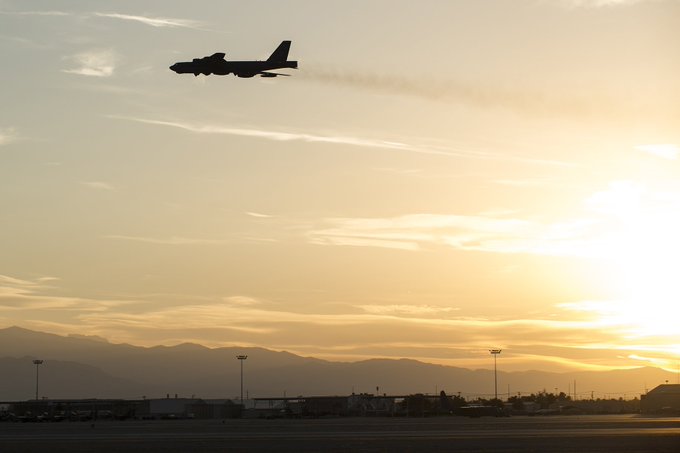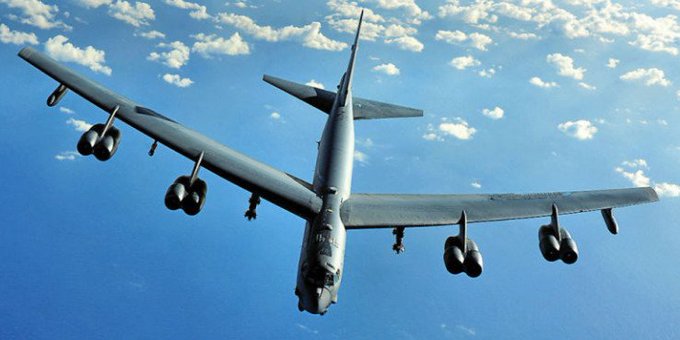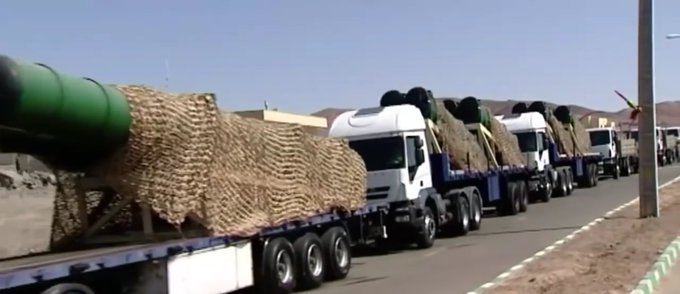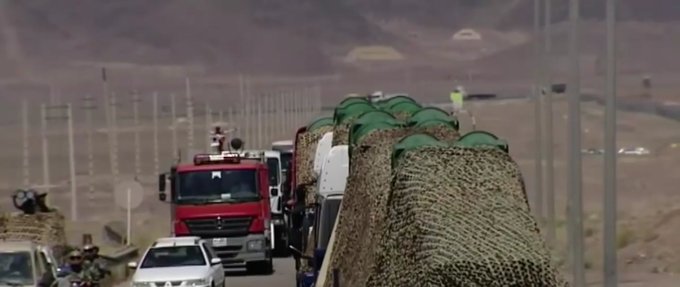Sorry folks, the meat world kind of had a death grip on me for the last 24 hours....
(231) 08-13-2016-to-08-19-2016_____****THE****WINDS****of****WAR****
http://www.timebomb2000.com/vb/show...19-2016_____****THE****WINDS****of****WAR****
(232) 08-20-2016-to-08-26-2016_____****THE****WINDS****of****WAR****
http://www.timebomb2000.com/vb/show...26-2016_____****THE****WINDS****of****WAR****
(233) 08-27-2016-to-09-02-2016_____****THE****WINDS****of****WAR****
http://www.timebomb2000.com/vb/show...02-2016_____****THE****WINDS****of****WAR****
-----
For links see article source.....
Posted for fair use.....
http://www.forbes.com/sites/gordonc...economics-is-the-new-militarism/#68bc9ea45252
Opinion
Sep 4, 2016 @ 12:01 AM 1,993 views The Little Black Book of Billionaire Secrets
At China's G20, Economics Is The New Militarism
Gordon G. Chang, Contributor
I write about Asia, especially the Chinese economy. Full Bio
Opinions expressed by Forbes Contributors are their own.
Friday, Philippine President Rodrigo Duterte said his country’s coast guard had spotted a number of Chinese barges at Bajo de Masinloc, what much of the world calls Scarborough Shoal. “What,” he asked, “is the purpose of a barge?”
The appearance of the barges can mean only one thing: Beijing is getting ready to make Scarborough, an uninhabited feature 124 nautical miles from the main Philippine island of Luzon, a Chinese military outpost. The shoal is strategic, guarding the mouths to both Manila and Subic bays.
Tensions in the South China Sea threaten global commerce—each year $5.3 trillion of goods cross the vital body of water—and have triggered war talk in East Asia. No economy in the region will do well unless leaders there can arrest the worrying trend of events.
So far, the report of the barges remains unconfirmed, but there’s no doubt that China seized Scarborough in early 2012. Then, Chinese and Philippine craft surrounded it and Washington brokered an agreement whereby both sides would withdraw. The Philippines complied, but China did not. The U.S. then did nothing, thereby rewarding the most hostile elements in the Chinese capital.
Those elements then went on a bender, ramping up pressure elsewhere in the South China Sea like Second Thomas Shoal, long thought to be part of the Philippines. They also went after the Senkaku Islands in the East China Sea. The Chinese call these specks the Diaoyus and have claimed them since 1971, but they are in fact controlled by Japan.
Secretary of State John Kerry in New Delhi on Wednesday said there is “no military solution” to the South China Sea, but the Chinese leadership evidently thinks there is.
And that brings us to the G20. Host China has worked hard to scrub the formal agenda of geopolitical issues, like disagreements over the South China and East China seas. Instead, Beijing wants to talk about economic cooperation and trade, as President Xi Jinping made clear in a 50-minute address Saturday at the Business 20 forum.
Yet economics is the new militarism. Beijing made it so. “When the Philippines sought to defend its claims in the Scarborough Shoal, Beijing showed its displeasure by leaving Filipino agricultural exports to rot on Chinese docks,” writes Jennifer Harris of the Council on Foreign Relations in the Washington Post. “China also initiated a fishing ban around waters claimed by the Philippines and depressed Chinese tourism to the Philippines.”
The tactic was an updating of China’s ban on rare-earth exports to Japan in 2010, over a spat in the East China Sea. That effort, a clear violation of its World Trade Organization obligations, produced only mixed results, so Beijing apparently decided to better plan its initiatives. The Ministry of Foreign Affairs in October 2012 established its Department of International Economy, an attempt to coordinate economic relations and subject them to foreign policy objectives.
That means Xi Jinping’s wish to talk only economics at the G20 is not really that benign.
Harris believes that China’s challenge in its peripheral seas “is an economic contest, not a military one.” One does not have to agree with her on this point to understand she is right to say we need economic-based strategies to confront Beijing. As the title of her piece tells us, “The Best Weapon Against Chinese Expansionism Is Not a Weapon.”
But is it a 45% tariff on Chinese goods? Critics made many valid objections to Donald Trump’s planned duty, but the responses reveal that Americans have not thought about the broader implications of trade with China. As Harris correctly writes, “If the United States is to check Beijing’s expansionism, it will need to make China bear the economic costs of its growing bellicosity.”
So far, Washington policymakers have been reluctant to impose costs beyond the occasional punitive tariff for particularly egregious conduct regarding, say, tires or solar panels.
The lack of strategic thinking looks like an American trait. Most Americans view the Trans-Pacific Partnership as a deficient trade deal instead of a means to bind the economies of 11 Pacific nations to the U.S., as the free-trade pact was conceived by President Obama.
As the debate about TPP suggests, Americans these days judge trade deals for their economic impact only.
Not so the Chinese. China’s policymakers think of trade primarily as an instrument of geopolitics, which is why they promote their “Silk Road Economic Belt,” announced in September 2013, and their “21st Century Maritime Silk Road,” unveiled a month later.
The “One Belt, One Road” project, which contemplates the building of transportation links between China and both Europe and Africa, is sold as an economic development plan, but it is uneconomic at its core. For decades, the expensive OBOR, as it is now called, will reap political influence, not cash. Beijing plans to sink at least one trillion dollars into this infrastructure.
The Philippines, once the home of Scarborough Shoal, would like some of China’s largesse. Duterte even once said he would “shut up” to get it, but it’s unlikely he will ever agree to give away territory for cash. He can’t part with an uninhabited rock like Scarborough because his country is nothing more than a series of rocks, reefs, shoals, specks, and islands.
As a result, his archipelago and China are locked in a zero-sum contest for Scarborough and Second Thomas Shoal and other features scattered in the South China Sea. Beijing, unfortunately, has made conquest of portions of the Philippines, Brunei, Malaysia, and Vietnam as well as all of Taiwan and some of the waters belonging to Indonesia a “sacred and inviolable” duty.
“We want to trade, do commerce with everybody,” Duterte said Friday. “We have plenty to sell, plenty to ship. I hope that there would not be a time that we have to make crucial decisions in our national life.”
If there are in fact barges at Scarborough, the Philippine president will have to make those decisions soon.
Follow me on Twitter @GordonGChang and on Forbes. And find much more here.
(231) 08-13-2016-to-08-19-2016_____****THE****WINDS****of****WAR****
http://www.timebomb2000.com/vb/show...19-2016_____****THE****WINDS****of****WAR****
(232) 08-20-2016-to-08-26-2016_____****THE****WINDS****of****WAR****
http://www.timebomb2000.com/vb/show...26-2016_____****THE****WINDS****of****WAR****
(233) 08-27-2016-to-09-02-2016_____****THE****WINDS****of****WAR****
http://www.timebomb2000.com/vb/show...02-2016_____****THE****WINDS****of****WAR****
-----
For links see article source.....
Posted for fair use.....
http://www.forbes.com/sites/gordonc...economics-is-the-new-militarism/#68bc9ea45252
Opinion
Sep 4, 2016 @ 12:01 AM 1,993 views The Little Black Book of Billionaire Secrets
At China's G20, Economics Is The New Militarism
Gordon G. Chang, Contributor
I write about Asia, especially the Chinese economy. Full Bio
Opinions expressed by Forbes Contributors are their own.
Friday, Philippine President Rodrigo Duterte said his country’s coast guard had spotted a number of Chinese barges at Bajo de Masinloc, what much of the world calls Scarborough Shoal. “What,” he asked, “is the purpose of a barge?”
The appearance of the barges can mean only one thing: Beijing is getting ready to make Scarborough, an uninhabited feature 124 nautical miles from the main Philippine island of Luzon, a Chinese military outpost. The shoal is strategic, guarding the mouths to both Manila and Subic bays.
Tensions in the South China Sea threaten global commerce—each year $5.3 trillion of goods cross the vital body of water—and have triggered war talk in East Asia. No economy in the region will do well unless leaders there can arrest the worrying trend of events.
So far, the report of the barges remains unconfirmed, but there’s no doubt that China seized Scarborough in early 2012. Then, Chinese and Philippine craft surrounded it and Washington brokered an agreement whereby both sides would withdraw. The Philippines complied, but China did not. The U.S. then did nothing, thereby rewarding the most hostile elements in the Chinese capital.
Those elements then went on a bender, ramping up pressure elsewhere in the South China Sea like Second Thomas Shoal, long thought to be part of the Philippines. They also went after the Senkaku Islands in the East China Sea. The Chinese call these specks the Diaoyus and have claimed them since 1971, but they are in fact controlled by Japan.
Secretary of State John Kerry in New Delhi on Wednesday said there is “no military solution” to the South China Sea, but the Chinese leadership evidently thinks there is.
And that brings us to the G20. Host China has worked hard to scrub the formal agenda of geopolitical issues, like disagreements over the South China and East China seas. Instead, Beijing wants to talk about economic cooperation and trade, as President Xi Jinping made clear in a 50-minute address Saturday at the Business 20 forum.
Yet economics is the new militarism. Beijing made it so. “When the Philippines sought to defend its claims in the Scarborough Shoal, Beijing showed its displeasure by leaving Filipino agricultural exports to rot on Chinese docks,” writes Jennifer Harris of the Council on Foreign Relations in the Washington Post. “China also initiated a fishing ban around waters claimed by the Philippines and depressed Chinese tourism to the Philippines.”
The tactic was an updating of China’s ban on rare-earth exports to Japan in 2010, over a spat in the East China Sea. That effort, a clear violation of its World Trade Organization obligations, produced only mixed results, so Beijing apparently decided to better plan its initiatives. The Ministry of Foreign Affairs in October 2012 established its Department of International Economy, an attempt to coordinate economic relations and subject them to foreign policy objectives.
That means Xi Jinping’s wish to talk only economics at the G20 is not really that benign.
Harris believes that China’s challenge in its peripheral seas “is an economic contest, not a military one.” One does not have to agree with her on this point to understand she is right to say we need economic-based strategies to confront Beijing. As the title of her piece tells us, “The Best Weapon Against Chinese Expansionism Is Not a Weapon.”
But is it a 45% tariff on Chinese goods? Critics made many valid objections to Donald Trump’s planned duty, but the responses reveal that Americans have not thought about the broader implications of trade with China. As Harris correctly writes, “If the United States is to check Beijing’s expansionism, it will need to make China bear the economic costs of its growing bellicosity.”
So far, Washington policymakers have been reluctant to impose costs beyond the occasional punitive tariff for particularly egregious conduct regarding, say, tires or solar panels.
The lack of strategic thinking looks like an American trait. Most Americans view the Trans-Pacific Partnership as a deficient trade deal instead of a means to bind the economies of 11 Pacific nations to the U.S., as the free-trade pact was conceived by President Obama.
As the debate about TPP suggests, Americans these days judge trade deals for their economic impact only.
Not so the Chinese. China’s policymakers think of trade primarily as an instrument of geopolitics, which is why they promote their “Silk Road Economic Belt,” announced in September 2013, and their “21st Century Maritime Silk Road,” unveiled a month later.
The “One Belt, One Road” project, which contemplates the building of transportation links between China and both Europe and Africa, is sold as an economic development plan, but it is uneconomic at its core. For decades, the expensive OBOR, as it is now called, will reap political influence, not cash. Beijing plans to sink at least one trillion dollars into this infrastructure.
The Philippines, once the home of Scarborough Shoal, would like some of China’s largesse. Duterte even once said he would “shut up” to get it, but it’s unlikely he will ever agree to give away territory for cash. He can’t part with an uninhabited rock like Scarborough because his country is nothing more than a series of rocks, reefs, shoals, specks, and islands.
As a result, his archipelago and China are locked in a zero-sum contest for Scarborough and Second Thomas Shoal and other features scattered in the South China Sea. Beijing, unfortunately, has made conquest of portions of the Philippines, Brunei, Malaysia, and Vietnam as well as all of Taiwan and some of the waters belonging to Indonesia a “sacred and inviolable” duty.
“We want to trade, do commerce with everybody,” Duterte said Friday. “We have plenty to sell, plenty to ship. I hope that there would not be a time that we have to make crucial decisions in our national life.”
If there are in fact barges at Scarborough, the Philippine president will have to make those decisions soon.
Follow me on Twitter @GordonGChang and on Forbes. And find much more here.


 US Mission to NATO @USNATO
US Mission to NATO @USNATO 